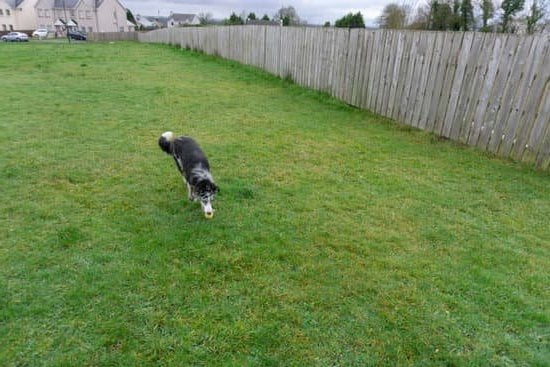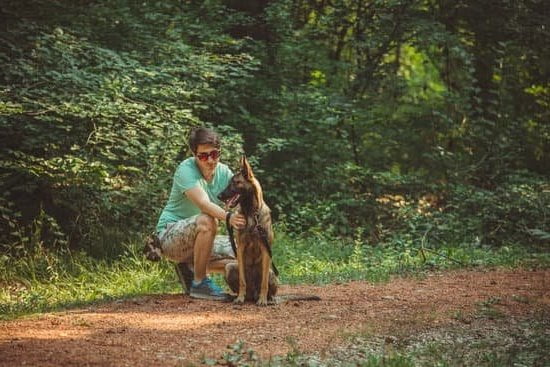Service dogs play a vital role in assisting individuals with disabilities to navigate their daily lives, providing them with independence and support. These remarkable animals undergo rigorous training to develop the skills necessary to help their handlers in various ways. However, not all dogs successfully complete this demanding training process. What happens to dogs that fail service training is a question that often arises, shedding light on the challenges faced by these canine companions.
The significance of service dogs in society cannot be overstated, as they provide invaluable assistance to people with disabilities, ranging from guiding the visually impaired to alerting those with hearing impairments. The training process for service dogs is intensive and specialized, focusing on teaching these animals specific tasks tailored to their handler’s needs. Despite the dedication of trainers and organizations, some dogs do not meet the stringent requirements set for service work due to various reasons.
For dogs that excel in service training, the reward lies in changing someone’s life for the better while forming an unbreakable bond with their handler. However, for those who do not make the cut, failing can take a toll on them emotionally. Understanding what happens to these dogs that fall short during training is crucial in advocating for their well-being and finding suitable alternatives that allow them to lead fulfilling lives outside of traditional service roles.
Importance of Service Dogs in Society
Service dogs play a crucial role in society, providing assistance and support to individuals with various disabilities and medical conditions. These specially trained canines not only act as constant companions but also help their handlers live more independently and improve their quality of life. From guiding individuals with visual impairments to alerting those with hearing loss to responding to medical emergencies, service dogs are truly lifesavers.
Here are some reasons why service dogs are so important in society:
- Enhanced independence: Service dogs empower individuals with disabilities to navigate the world with greater freedom and confidence.
- Improved safety: These highly trained canines are able to detect potential dangers and respond accordingly, keeping their handlers out of harm’s way.
- Emotional support: Beyond just performing specific tasks, service dogs provide emotional comfort and companionship, reducing feelings of isolation and loneliness for their handlers.
Despite the invaluable role that service dogs play in society, not every dog is cut out for this demanding job. Some dogs may struggle with the intensive training required or be unable to handle the stress of certain situations. So, what happens to dogs that fail service training?
- Reevaluation and career change: Dogs that don’t succeed in service training may be reassessed to determine if they could excel in other roles such as therapy animals or family pets.
- Adoption into loving homes: Many organizations work tirelessly to find suitable forever homes for these dogs, where they can thrive and live fulfilling lives outside of service work.
- Rightsizing the program: Some organizations may reevaluate their training methods or criteria based on the experiences of failed service dogs, ultimately improving their programs for future success.
Overall, while it’s heartbreaking when a dog doesn’t make it through service training, there are still opportunities for them to find happiness and purpose elsewhere. With compassion and understanding, we can ensure that these dedicated animals have a bright future ahead.
The Training Process for Service Dogs
Initial Evaluation and Selection
Before embarking on the journey of service dog training, dogs undergo a rigorous evaluation process to determine their suitability for the role. Certain traits such as intelligence, obedience, sociability, and willingness to work are key factors in the selection of candidates. Not all dogs are cut out for service work, and those that do not exhibit the necessary characteristics may be weeded out early in the process.
Specialized Training Programs
Once selected, service dogs-in-training go through specialized programs tailored to their eventual roles. These programs typically involve obedience training, task-specific instruction based on the needs of their future handler, socialization with people and other animals, public access training, and exposure to various environments to ensure they can handle different situations confidently. The training can last up to two years before a dog is considered ready for placement.
The Reality of Failure
Despite the best efforts put into training, not all dogs will successfully complete their service dog training program. Failure can happen due to various reasons such as health issues, temperament mismatch, fear or anxiety problems, or simply not meeting the stringent criteria set for service work.
When a dog fails service training, it is crucial to understand that it does not diminish their value or worth as a companion animal; it simply means they are better suited for a different career path.
Challenges Faced by Dogs in Service Training
Service dogs undergo extensive training to provide vital assistance to individuals with disabilities. However, not all dogs are able to meet the rigorous standards required for service work. These dogs face unique challenges during training that can hinder their progress and ultimately lead to them not passing as service dogs. One of the main challenges faced by these dogs is maintaining focus and attention for extended periods, as service tasks often require consistent concentration.
In addition to focus issues, some dogs may struggle with obedience or mastering complex commands needed for their service duties. The physical demands of certain tasks, such as guiding the visually impaired or providing mobility assistance, can also pose challenges for some dogs in training. Moreover, the stress of new environments, people, and situations can impact a dog’s ability to perform consistently at the level required for service work.
So, what happens to dogs that fail service training? While it can be disheartening for both trainers and handlers when a dog doesn’t pass as a service dog, these animals are not considered failures. Many organizations have programs in place to transition these dogs into other roles where they can thrive.
Some may find success in careers as emotional support animals, therapy dogs, or even as beloved family pets. It’s important to remember that each dog has its own strengths and abilities, even if they may not be suited for service work.
| Challenges Faced by Dogs in Service Training | What Happens to Dogs That Fail Service Training |
|---|---|
| Focus and attention issues | Transitioned into other roles |
| Obedience difficulties | Success as emotional support animals or therapy dogs |
| Physical demands of tasks | Valued as family pets |
What Happens to Dogs That Excel in Service Training
Service dogs are an invaluable part of society, providing assistance and support to individuals with disabilities. These specially trained canines undergo rigorous training to ensure they can fulfill their roles effectively. While many dogs excel in service training and go on to make a significant impact in the lives of their handlers, not all dogs are able to meet the requirements of this demanding role.
For dogs that excel in service training, the rewards are immense. These dogs often develop close bonds with their handlers, becoming trusty companions and sources of comfort. They are able to carry out specialized tasks that greatly enhance the quality of life for individuals with disabilities, whether it be guiding the visually impaired, alerting those with medical conditions, or providing emotional support.
However, not all dogs are able to meet the stringent standards set for service work. Some may struggle with certain tasks or exhibit behavior that is unsuitable for a service environment. In these cases, what happens to dogs that fail service training? It is essential to understand that these animals still have potential and value outside of the service dog industry.
The Emotional Toll of Failing Service Training
Service dog training is a rigorous and demanding process that not every dog is able to successfully complete. Dogs that fail service training often face emotional challenges that can impact them deeply.
These dogs have spent hours learning specific tasks, forming bonds with trainers, and preparing for a life of service to individuals in need. When they are unable to meet the high standards required for service work, it can be emotionally difficult for both the dogs and the humans involved in their training.
Feelings of Rejection and Disappointment
For dogs that fail service training, feelings of rejection and disappointment are common. These animals are incredibly intelligent and eager to please, so not being able to fulfill their intended role can be disheartening for them. Dogs may sense the frustration or sadness of their handlers and trainers, further exacerbating their own emotional turmoil. This sense of failure can lead to behavioral changes in dogs, such as decreased energy levels, anxiety, or even depression.
Loss of Identity and Purpose
During service dog training, dogs often develop a strong sense of purpose and identity as they learn valuable skills to assist individuals with disabilities. When they do not succeed in this role, they may experience a loss of identity and struggle to find their place in the world.
Dogs that fail service training may exhibit signs of confusion or uncertainty as they navigate this shift in their perceived purpose. It is crucial for handlers and trainers to provide support and understanding during this challenging time to help these dogs adjust to their new reality.
The Need for Compassion and Care
It is important for organizations and individuals involved in service dog training to approach the situation with compassion and care when a dog does not pass the program. Understanding that each dog has its unique strengths and limitations can help guide decisions on what happens next for these animals.
While it may be disappointing when a dog fails service training, there are still opportunities for them to find fulfillment in other roles or environments. By providing love, patience, and support, we can ensure that these dogs have a happy ending despite not making the cut for service work.
Options for Dogs That Fail Service Training
When service dogs do not successfully complete their training, there are various options available to them to ensure they still lead fulfilling lives. One common path for dogs that fail service training is to be adopted by loving families as pets.
These dogs, despite not meeting the rigorous standards of service work, can still make wonderful companions and bring joy to their new owners. Many organizations that train service dogs have programs in place to match these dogs with suitable adopters who can provide them with a forever home.
In some cases, dogs that are not successful in service training may be transitioned into other types of work that better suit their personalities and abilities. For example, some dogs may be trained as therapy animals to provide comfort and support to individuals in need, such as hospital patients or nursing home residents.
Others may find success as search and rescue or detection dogs, using their keen sense of smell and intelligence to assist in different capacities. Finding the right fit for each dog ensures they can still make a positive impact in the world.
It is important to remember that failing service training does not diminish the value or potential of these dogs. Each dog is an individual with unique strengths and characteristics, and it is crucial to recognize and appreciate these qualities beyond their ability to perform specific tasks. With the right guidance and support, even dogs that do not excel in service training can lead happy and fulfilling lives, contributing positively to the world in their own special way.
Finding a Happy Ending for Dogs That Don’t Make the Cut
Service dogs play a crucial role in society, assisting individuals with disabilities and providing them with increased independence and support. However, not all dogs are able to successfully complete the rigorous training required to become service dogs. So, what happens to these dogs that don’t make the cut?
Here are some options for dogs that fail service training:
- Adoption as a Pet: Many organizations work to find loving homes for dogs that are released from service dog training programs. These dogs can still make wonderful pets and bring joy to families looking for a furry companion.
- Career Change: Some dogs may not excel in traditional service roles but could thrive in other working environments. They may be trained for roles such as emotional support animals, therapy dogs, or even detection dogs for law enforcement agencies.
- Second Chance Programs: There are specialized programs and organizations that focus on giving failed service dogs a second chance at success. These programs provide additional training and support tailored to the specific needs of each dog.
It is important to remember that just because a dog doesn’t succeed in becoming a service dog doesn’t mean they are without value or potential. Finding the right path for these dogs is essential in ensuring they lead fulfilling lives and continue to make positive contributions to society in different ways.
Ultimately, while it can be emotionally challenging for both handlers and organizations when a dog fails service training, there are opportunities for these animals to find happiness and purpose in alternative roles or placements. By approaching the situation with compassion and understanding, we can ensure that every dog receives the care and support they need, regardless of their success in the service dog training program.
The Impact of Failed Service Dogs on Handlers and Organizations
When a dog fails service training, it can have a significant impact not only on the dog itself but also on the handlers and organizations involved in the training process. Handlers who have bonded with these dogs may experience feelings of disappointment, sadness, and even guilt.
They may feel like they have let their furry companions down, despite their best efforts to help them succeed. For organizations that invest time, resources, and love into training these dogs, the realization that a dog has failed to meet the standards can be disheartening.
The emotional bond between handlers and dogs in service training is strong, as they work closely together every day towards a common goal. When a dog does not pass the rigorous requirements of service training, it can be devastating for both parties. Handlers may struggle with feelings of loss and uncertainty about what comes next for their beloved canine partners.
For organizations involved in service dog training, the news of a failed dog can present logistical challenges as well. They may need to reassess their training methods, evaluate where things went wrong, and determine what steps to take next.
It is crucial for organizations to provide support not only to the handlers but also to the dogs who do not make it through the program. By offering guidance, resources, and compassion during this difficult time, organizations can ensure that these dogs still have a chance at finding a fulfilling life beyond service training.
Conclusion
In conclusion, the training of service dogs plays a vital role in our society, providing invaluable assistance to individuals with disabilities. While many dogs excel in their training and go on to lead fulfilling lives as service animals, there is also a significant number of dogs that do not make the cut. These dogs face challenges and struggles during the training process, which can take an emotional toll on them.
For those dogs that fail service training, there are various options available to ensure they still find a happy ending. Some may be adopted as pets, while others may be considered for other types of work or even be part of research programs. The important thing is to find a suitable path for each dog based on their individual needs and abilities.
It is crucial for handlers, organizations, and society as a whole to approach failed service dogs with compassion and understanding. These dogs have dedicated their time and effort to training and deserve to be recognized for their efforts, even if they did not succeed in becoming service animals. By showing empathy towards these dogs and finding them suitable placements, we can ensure that they still have fulfilling lives beyond their service training journey.
Frequently Asked Questions
What Happens to Rejected Service Dogs?
Rejected service dogs typically go through a process of being “career changed” to find them a more suitable role. This can involve being adopted by individuals or families as pets, or transitioning into other types of working roles that better suit their temperament and skills.
What Is the Failure Rate for Service Dogs?
The failure rate for service dogs can vary depending on the organization and the specific training program. On average, it is estimated that around 50% of service dog candidates do not successfully complete the training program to become fully qualified service dogs. Factors such as health issues, behavior problems, or temperament mismatches can contribute to this failure rate.
What Happens to Failed Military Dogs?
When military dogs are deemed unsuitable for their roles or retiring from active duty, they have several potential outcomes. Some retired military dogs may be adopted by their handlers or other individuals who wish to provide them with a loving home in retirement.
Others may be transferred to organizations specializing in rehoming retired military dogs, where they can be matched with suitable adoptive families who understand their unique needs and backgrounds.

Welcome to the blog! I am a professional dog trainer and have been working with dogs for many years. In this blog, I will be discussing various topics related to dog training, including tips, tricks, and advice. I hope you find this information helpful and informative. Thanks for reading!





